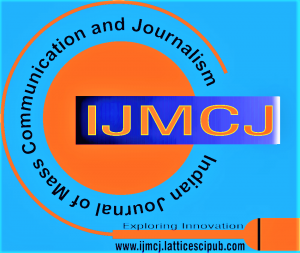The Future of Yellow Journalism in India
Frah Rukhsar Khan
Frah Rukhsar Khan, Communication Theory and Models, Media Research, and Management, Jaunpur, India.
Manuscript received on 06 April 2022 | Revised Manuscript received on 11 November 2022 | Manuscript Accepted on 15 December 2022 | Manuscript published on 30 December 2022 | PP: 23-27 | Volume-2 Issue-2, December 2022. | Retrieval Number: 100.1/ijmcj.D1014061422 | DOI:10.54105/ijmcj.D1014.122222
Open Access | Ethics and Policies | Cite | Mendeley | Indexing and Abstracting
© The Authors. Published by Lattice Science Publication (LSP). This is an open-access article under the CC-BY-NC-ND license (http://creativecommons.org/licenses/by-nc-nd/4.0/)
Abstract: This research aims to understand how the media work in India regarding Yellow Journalism has influenced the thinking of the citizens. In India, Yellow Journalism has only picked up in the last one to two decades and has spread widely all-around India affecting the readers. The purpose of the development of Tv channels, newspaper, and magazines are to be the first to publish the news and to encourage higher circulation than the other newspapers in India. Yellow journalism has been characterized as a pure form of commerce rather than legitimate journalism. The research goal is to find out if most of India’s news and the media are based on exaggeration and how other countries are starting to practice Yellow Journalism. A qualitative research method was applied to this study and analyzed through the case studies using the document analysis design, with an inductive research approach, which depends on inductive reasoning. In spite of the fact that media has the opportunity to publish and broadcast data within the frame of news and entertainment, certain standards, rules, and controls should have been adhered to. Efforts are being undertaken all around the world to form guidelines and standards for media consideration.
Keywords: Ethics, India, Media, Yellow Journalism.
Scope of the Article: Journalism
